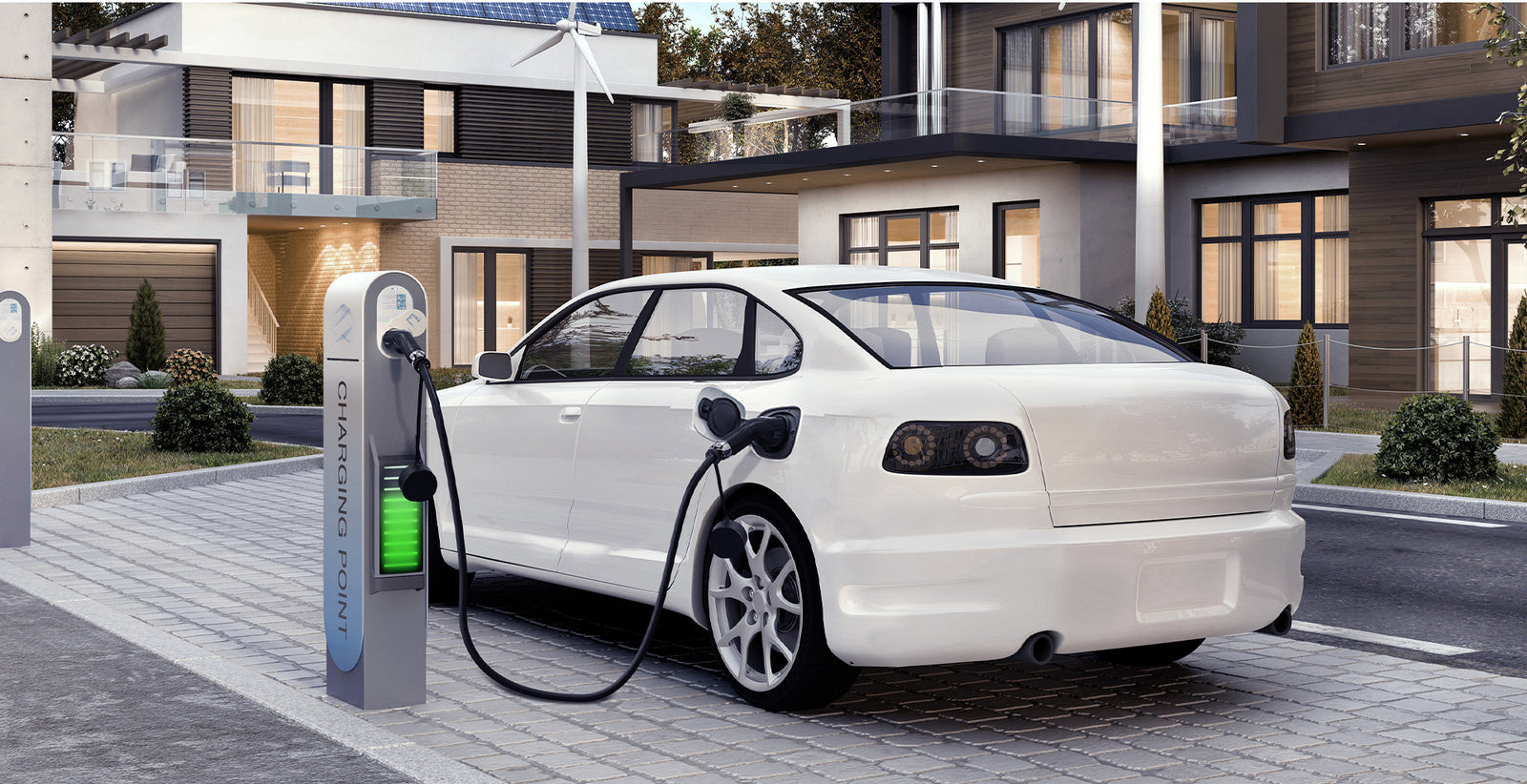Why do you need to choose the right EV charger cable?
Considering public facilities' cost, maintenance, and safety, European public Electric Car chargers (charging stations) are rarely equipped with cables.
More and more household charging stations are also split into wallbox without cable, which must be prepared by car owners themselves.
Whether it is a home charger or a public charger, it is extremely important to choose a reliable type 2 to type 2 EV charging cable.
This article takes GONEO EV charger type 2 as an example to help you choose the right car charging cable from various dimensions;
How to choose the cable?
Charging Port:
There are four types of AC charging ports for Electric Vehicles: type 1, type 2, GB/T, and Tesla standard port.
And five types of ports for DC charging, CCS 1, CHAdeMO, CCS2, GB/T, and Tesla standard port.
Fortunately, AC, DC, or Tesla are unified type 2 ports in Europe. So, if you are a European EV owner, all you need is a type 2 to type 2 charging cable.

Maximum Charging Input:
The most common charging cables in the market are EV chargers 7kw type 2, 11kw, and 22kw charging cables, so which one should you choose?

Previous articles mentioned that every electric vehicle model has a standard maximum charging value while charging.
We can simulate a case like this. If you are driving a Kia Soul EV 39.2 kWh (nominal capacity of 42kwh, and maximum AC charging input of 7.2kw). You can use a 7kw 11kw EV charger, or a 22kw EV charger to charge, but eventually, it only takes 7.2kw.
Therefore, in this case, we recommend that you choose a 7.2kw or 11kw EV car charger cable.
If your AC maximum power exceeds 11kw, such as Tesla Model S (16.5 kW), you can choose a 22kw charging cable.
Safety:
To ensure safety, power and cable thickness should go together. Higher power requires thicker charging cables, just like those for mobile devices.
The 5-core wire inside the GONEO Electric vehicle charger is connected to ensure efficient current carrying. The external TPU material can bear 2 tons of weight. It can be charged normally even if the car is overrun.

Length:
Length is also an important factor for you to consider before buying a charging cable.
For owners who charge at home, the EV charging station is right next to EV, then 5 meters might suit your daily needs.
But for apartment or public charging users, it is not always possible to stop right in front of the charging station. You may have to walk around the distance of a car to charge. Then you might need a longer one.
For a better view, you can check which length would be more suitable for your purposes in the diagram below.

Accessories:
As a daily used tool, EV charging cables are often kept in the back of your car. If you don't like a messy boot, don't forget to check, if the cable comes with a storage accessory.
GONEO charging cable comes with velcro tape and an EV Charging Cable Bag. A tape to organize the cable and an EV cable bag to keep it. Not only got a carry handle, but the nylon storage bag is also hard-wearing and dirt-resistant. Which can protect your cable and save boot space at the same time.

Service:
Don't need to mention the importance of after-sale service, right?
With a 2-year warranty, whether you buy our products from Amazon or our website. GONEO's after-sales team will be the first to answer your questions and solve your problems.
You can reach us on various channels, check it out below!
Facebook group: Goneo Renewable Energy Product
Website group: Goneo Forum
After-sales email: support@goneohome.com
Wanna check our cable?
You can find a comparison of the GONEO charging cables here: Germany, United Kingdom, Spain, French, Italy, etc.

This is how to choose the right charging cable for you.
If you have any other questions about EV charging, don't hesitate to contact us!
Q & A
Why does public charging station in Europe don't have cable?
Public charging stations in Europe often do not have cables attached to them because of safety concerns and to ensure compatibility with a wide range of electric vehicles.
Not having a cable attached to the charging station, allows for greater flexibility in terms of the type of cable that can be used to charge the vehicle.
This is important because different electric vehicles may require different types of cables, and having a fixed cable attached to the charging station may limit the types of vehicles that can use it.
Additionally, not having a cable attached to the charging station can help prevent damage to the cable and reduce the risk of tripping hazards for pedestrians. Instead, electric vehicle owners are expected to bring their own charging cable and plug it into the charging station.
This approach is becoming increasingly common in Europe and is seen as a practical and safe solution for public charging infrastructure.









